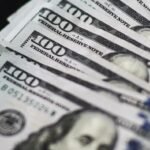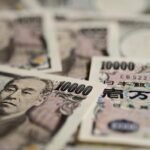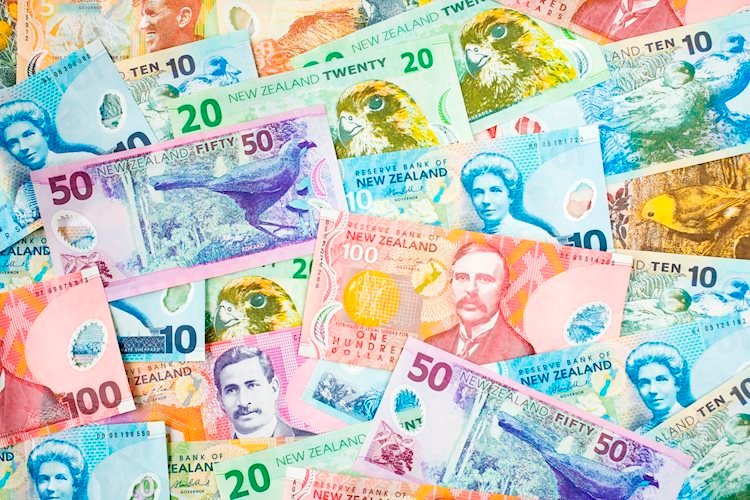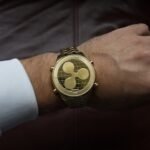Here is what you need to know on Thursday, October 17:
The US Dollar (USD) continued to gather strength against its major rivals midweek, with the USD Index rising 0.3% to register its highest daily close in over two months on Wednesday. On Thursday, the European Central Bank (ECB) will announce monetary policy decisions. In the American session, the US economic calendar will feature weekly Initial Jobless Claims data, alongside the Retail Sales and Industrial Production figures for September.
US Dollar PRICE This week
The table below shows the percentage change of US Dollar (USD) against listed major currencies this week. US Dollar was the strongest against the Swiss Franc.
| USD | EUR | GBP | JPY | CAD | AUD | NZD | CHF | |
|---|---|---|---|---|---|---|---|---|
| USD | 0.73% | 0.58% | 0.31% | -0.01% | 0.93% | 0.73% | 1.12% | |
| EUR | -0.73% | -0.22% | -0.50% | -0.65% | 0.23% | -0.09% | 0.30% | |
| GBP | -0.58% | 0.22% | -0.29% | -0.57% | 0.48% | 0.15% | 0.49% | |
| JPY | -0.31% | 0.50% | 0.29% | -0.33% | 0.64% | 0.46% | 0.80% | |
| CAD | 0.00% | 0.65% | 0.57% | 0.33% | 0.89% | 0.75% | 0.96% | |
| AUD | -0.93% | -0.23% | -0.48% | -0.64% | -0.89% | -0.19% | 0.16% | |
| NZD | -0.73% | 0.09% | -0.15% | -0.46% | -0.75% | 0.19% | 0.33% | |
| CHF | -1.12% | -0.30% | -0.49% | -0.80% | -0.96% | -0.16% | -0.33% |
The heat map shows percentage changes of major currencies against each other. The base currency is picked from the left column, while the quote currency is picked from the top row. For example, if you pick the US Dollar from the left column and move along the horizontal line to the Japanese Yen, the percentage change displayed in the box will represent USD (base)/JPY (quote).
During the Asian trading hours, the data from Australia showed that the Unemployment Rate held steady at 4.1% in September. The Employment Change was up 64.1K, with Full-Time Employment rising by 51.6K. After closing the third consecutive trading day in negative territory on Wednesday, AUD/USD staged a rebound early Thursday and was last seen rising 0.3% on the day, slightly below 0.6700. In the meantime, People’s Bank of China (PBOC) Deputy Governor said on Thursday that most stock of existing mortgage loans interest rates will be adjusted on October 25, adding that this adjustment will apply to 90% of existing mortgages.
The ECB is widely expected to lower key rates by 25 basis points following September rate cuts. After the ECB announces the policy decisions, ECB President Christine Lagarde will speak at a press conference starting at 12:45 GMT and respond to questions from the press. Pressured by the persistent USD strength, EUR/USD extended its weekly slide and registered losses on Wednesday. The pair struggles to find a foothold in the European morning on Thursday and trades at its weakest level since early August at around 1.0850.
GBP/USD declined sharply on Wednesday as the September inflation data from the UK, which showed that inflation softened at a faster pace than forecast, triggered a selloff in Pound Sterling. After losing more than 0.6% on Wednesday, GBP/USD fluctuates in a tight channel below 1.3000 on early Thursday.
USD/JPY registered small gains on Wednesday as it struggled to gather bullish momentum. The pair holds steady in the European morning and trades slightly above 149.50.
Gold closed the second consecutive day in positive territory on Wednesday. XAU/USD continues to edge higher and trades within a touching distance of the all-time-high it set at $2,685.
ECB FAQs
The European Central Bank (ECB) in Frankfurt, Germany, is the reserve bank for the Eurozone. The ECB sets interest rates and manages monetary policy for the region. The ECB primary mandate is to maintain price stability, which means keeping inflation at around 2%. Its primary tool for achieving this is by raising or lowering interest rates. Relatively high interest rates will usually result in a stronger Euro and vice versa. The ECB Governing Council makes monetary policy decisions at meetings held eight times a year. Decisions are made by heads of the Eurozone national banks and six permanent members, including the President of the ECB, Christine Lagarde.
In extreme situations, the European Central Bank can enact a policy tool called Quantitative Easing. QE is the process by which the ECB prints Euros and uses them to buy assets – usually government or corporate bonds – from banks and other financial institutions. QE usually results in a weaker Euro. QE is a last resort when simply lowering interest rates is unlikely to achieve the objective of price stability. The ECB used it during the Great Financial Crisis in 2009-11, in 2015 when inflation remained stubbornly low, as well as during the covid pandemic.
Quantitative tightening (QT) is the reverse of QE. It is undertaken after QE when an economic recovery is underway and inflation starts rising. Whilst in QE the European Central Bank (ECB) purchases government and corporate bonds from financial institutions to provide them with liquidity, in QT the ECB stops buying more bonds, and stops reinvesting the principal maturing on the bonds it already holds. It is usually positive (or bullish) for the Euro.
























